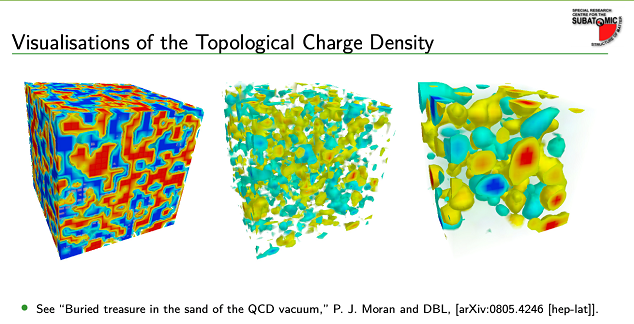INT 20r-77 Highlights Report
Origin of the Visible Universe: Unraveling the Proton Mass
June 13 - 17, 2022
I. Cloët, Z.-E. Meziani, B. Pasquini

The workshop addressed the fundamental question of how the mass of the proton emerges from the strong interaction dynamics.
One way to deal with this question is to determine how current quarks and gluons contribute to the proton mass. A goal of the workshop was to discuss different proton-mass decompositions and how we can take advantage of the non-uniqueness of the decomposition to cast it in terms of intuitive physical quantities.
Any proton-mass decomposition relies on the same inputs, i.e., the quark and gluon contributions to two independent energy-momentum tensor form factors. An essential goal of the workshop was to identify key measurements to access and disentangle the individual contributions to the proton mass. In particular, observables from deep inelastic lepton scattering, pion-nucleon scattering and a direct measurement of the gluon contribution to the trace anomaly have been discussed. Highlights from recent measurements at JLab of the gluonic trace anomaly have been presented at the workshop for the first time and perspectives for future measurements that can be pursued at EIC have been discussed.
The interplay between phenomenological approaches and lattice QCD calculations was also a relevant part of the discussions in the workshop. Lattice QCD results at large quark masses for the quark and gluonic gravitational form factors have been presented. Future lattice calculations at the physical pion mass will provide critical benchmarks to reach the quarks energy distribution and the gluonic tensor and scalar energy distributions in the proton.
Visualizations to discover the origin of the proton mass:
http://www.physics.adelaide.edu.au/cssm/lattice/vortex/
